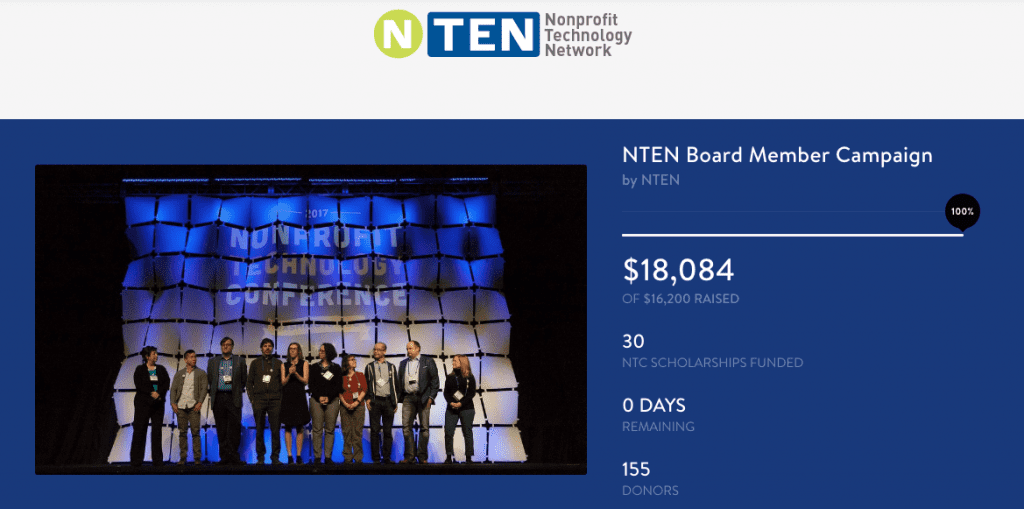Nearly a quarter of all Americans participate in volunteer opportunities with charitable organizations. Many choose to do volunteer fundraising projects. This is excellent news for your nonprofit.
When a person chooses to work with your cause to further your mission, support your programming, and leverage your impact, it means something—they care.
One of the greatest benefits of volunteerism is that the volunteer can get an in-depth look “behind the scenes” of your organization. By providing your volunteers the chance to interact with your staff, other volunteers, and even your client base, they gain a better understanding of the need they’re helping to address. And the best part? Anyone, from members of the baby boomer generation to the children of millennials can help!
Every nonprofit provides volunteers with different jobs, from packing backpacks full of non-perishable food for families-in-need to cleaning up playgrounds. As you know, there are unlimited ways your volunteers help your organization thrive.
But, have you ever thought of recruiting your volunteers to help boost your organization’s financial side?
Promoting your volunteers to fundraisers is a surefire way to get them involved on a deep level, leverage your volunteer’s influence, and really make a difference for your org’s bottom line. Here are some strategies to help encourage your volunteers to assist with fundraising efforts.
5 Volunteer Fundraising Ideas
1. “Thank You” Notes
I know you know it already, but it always bears repeating: a simple, straightforward, and above all, genuine “Thank You” note isn’t just a nice gesture, it’s essential in today’s fundraising landscape. With hundreds of thousands of nonprofits out there, it’s important to stand out, and a “Thank You” helps accomplish that.
Naturally, your nonprofit staff is strapped for time. So, instead of scrambling to write those notes during your lunch hour (been there, done that), recruit your volunteers to help. Schedule a set time each week for volunteers to come in and help. Provide them with stationary, writing utensils, and a sample template put on some jams, and make them feel at home.
The letter recipient will undoubtedly appreciate the letter, especially if it comes from the perspective of someone who devotes their time to your cause.
2. Donor Phone Calls
Does your nonprofit or charity participate in donor phone-a-thons or something similar? If so, then you know these fundraising campaigns require “all hands on deck.” To help ease the burden and also diversify your volunteer opportunities, ask volunteers to help make the calls.
At United Way, we would often provide our volunteers with call lists and a sample script to help frame their conversation. Our volunteers were free to make the calls in their own time during a certain period, so it was comfortable, flexible, and easy for everyone involved.
3. Sharing Stories on Social Media
Social sharing is becoming more important year after year. Today, nonprofits must rely on the support of our online followers to promote our messages of impact and campaign-related information. You simply don’t have the same reach you one did when posting to your social media account anymore.
Leverage the influence of your volunteers among their networks by asking them to share their own nonprofit stories on social media. Prompt volunteers to share how they are impacted by your work, why they give of their time, and why they believe your cause is worth supporting.
Positive word-of-mouth stories validate your work in the eyes of readers.
4. Connecting You With Potential Prospects
Prospective donors are everywhere, and one of the most effective ways to reach these prospects is through your current relationships.
If your volunteers know someone who may be a good fit with your cause, such as a potential major donor or board member, let your volunteers know you’d love for them to help foster this connection!
Ask volunteers to facilitate a meet-up, at your office, over coffee, at their workplace—wherever! This is the perfect (and necessary) first step to educate and inspire this prospect to become a lifelong supporter.

NTEN utilized their board members to mobilize prospective donors into action using peer-to-peer fundraising. Through their campaign, they raised money for scholarships, engaged the board, and connected NTEN with 155 new and returning donors!
5. Peer-to-Peer Fundraisers
To truly excel at peer-to-peer fundraising campaigns, your nonprofit needs the help of volunteers. At CauseVox, we call these people personal fundraisers, and they’re truly the lifeblood of your fundraising efforts.
Personal fundraisers set up a fundraising page complete with motivation for their friends and family to give, such as a personal story, moving images, and video clips. Then, with the assistance of your staff, they share their campaign in-person, through email, and on social media to garner financial support for the campaign.
Peer-to-peer fundraising uses community-driven fundraising to activate and rally your volunteers to use their influence to inspire new donors.
What Your Volunteers Need to Evolve Into Fundraising
There are so many ways to promote your volunteers to fundraisers. Before you begin shaping your own volunteer engagement plan, remember that it’s up to your organization to provide the necessary tools for fundraising success. After all, some of your volunteers may have never fundraised a day in their lives.
To effectively evolve into rockstar fundraisers, give your volunteers the following:
- Staff Support: Always dedicate one (or more) staff members to manage volunteer fundraising efforts.
- Training: Whether they’re serving as personal fundraisers or making phone calls on your behalf, it’s important to give your volunteers proper training, such as an in-person volunteer training meeting or a fundraising toolkit. All volunteers should have all the information they need to do their job effectively. This may include:
- Why they’re doing what they’re doing/how it furthers the mission of your organization
- The end goal of the activity
- How they’re leveraging their own power to supplement your resources
- Camaraderie: Whenever possible, connect your volunteer fundraisers together, whether online on your peer-to-peer fundraising website or in-person.
- Passion: Above all, your volunteers need to feel passionate about the work of your organization. Passion for your work is at the core of all effective fundraising.
Diversify your volunteer opportunities, boost your financial health, get in front of a new and broader prospective donor base, and rally your volunteer supporters in a different way by promoting your volunteers to fundraisers.
It’s good for your organization. It’s good for volunteers. It’s good for the people, places, and things you serve.
To leverage your community of volunteers through peer-to-peer fundraising, start by setting up a free account.
Editor's Picks
Ultimate Guide To Peer-to-Peer Fundraising
Customer Story: Spur Local Raises Over $1M With Their Give Local Campaign
Fundraising Strategies for Nonprofits: Craft the Best Approach for Your Organization
Create a Killer Fundraising Plan - Best Practices, Strategies, & Downloadable Template



